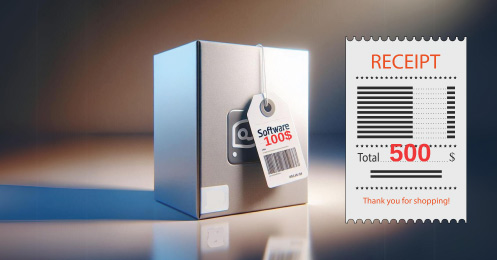It would be difficult (and not efficient) to conduct and grow a business without ever looking back at previous data and using it to make informed decisions. Compiling information into an organized format or report helps promote cross-departmental communication and improves decision-making by identifying problems during the early stages.
Let’s look at a common business scenario. You already have metrics, KPIs and other data stored in your backend system, and you want to create a customized report. You might already know how to manually make one but if you want to look at that new report weekly with updated information, are you really going to manually re-create the report every week?
Maybe, but you’ll have to dedicate time to this task.
Instead, it’s helpful to have this report automatically created and sent to you and your executive team every Monday at 9 am on the dot. The report is created once and updated based on specific criteria or refreshing the data. This frees up time to read and understand the report, making it useful for informed decision making.
What is Report Automation?
Report Automation is a business process that automatically generates and sends reports full of specific information, to specific people, during pre-determined times. Automated reports can be created for any business operation you choose and are widely used in business environments to assess past and present performance and offer insight into future business affairs.
Creating automated reports is simple if you use an all-in-one ERP system because the information is stored in one database. You can create cross-departmental reports quickly and without error. On the other hand, you’ll have multiple databases if you are using different systems for accounting, point-of-sale, and inventory, making cross-departmental reporting a little trickier.
What are the Benefits of Report Automation?
Reporting itself has quite a few benefits for small businesses and some might not know that they already have access to automation tools so it's important to check with your vendor about what you can do. One of the biggest benefits of report automation is the time savings. Benjamin Franklin used the phrase 'time is money' in his book, Advice to a Young Tradesman, which outlines that if time is wasted, your opportunity to make money declines. So, the more time you can save, the more money you can make.
Time Savings – Manually creating reports is prone to error and takes a long time to create and organize. Instead, report automation allows you to have access to more reports, quicker and on a consistent basis. You’ll have a well-rounded view of your business operations and issues. You can now spend time fixing those issues or updating your processes for a more efficient business instead of spending time creating reports.
Accuracy – The benefit of accuracy is two-fold when it comes to report automation. Since the reports are automatically generated from the database, there is no human error with report creation, and it is presented in real-time. Meaning you are viewing the most up-to-date information available.
Customization – Canned reports straight out of your system are sometimes all you need but in other cases are not beneficial for your business. You need reports that speak to the problems you deal with on a daily basis and the great thing is once you set up the customization, the report can be automated just like the canned ones.
Nothing is perfect and while report automation has a lot more benefits than downfalls, there are a few challenges that are easy to avoid if you’re careful. The first hurdle you’ll encounter is learning and developing the reports. There are tools such as SSRS, Power BI or Crystal reports that you can create yourself, but if you are unfamiliar, check with your software vendor to see if they’ll create the customized reports for you.
Report Automation Example
A great example of report automation that business owners should consider are exception reports. Exception Reports are automatically sent to alert a business when something is outside the norm. For example, an Inventory Exception Report will tell you when units sold are trending upward beyond normal growth and that the particular product is not already on a purchase order. This will alert your buyers to purchase more products and cause your management team to rethink minimum quantity levels.
There are quite a few reports like this that are worth exploring. Talk to your software vendor to see what’s available and what options you have for customization.










